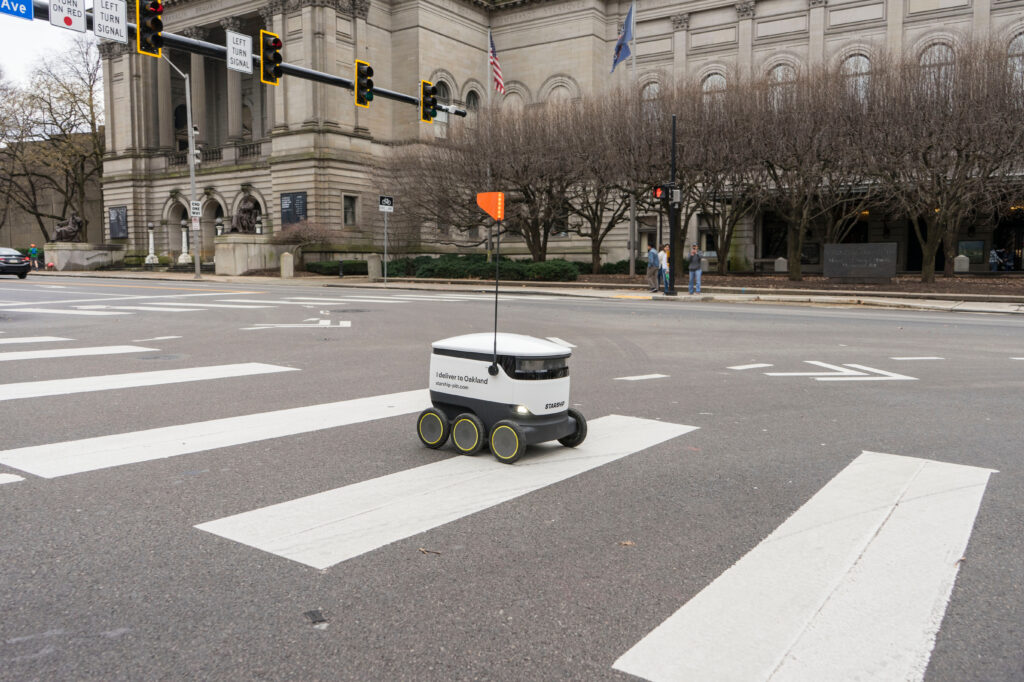
- Products
- Solutions
- Learn
- Partner
- Try Now
According to Fortune Business Insights, the global on demand industry is projected to grow to 400 billion dollars by 2027. It was at 350 billion dollars in 2022 and at 150 billion dollars in 2021. The growth tripled from 2017 to 2021 and more than doubled in the last year. This proves that the industry has an upward curve and it is very rapid.
On demand industry is a cost intensive industry, we are not denying that but with strategic planning, technical adoption and enhancement of the customer experience, it can be made profitable.
Let’s understand.
What is On demand delivery?
On demand, as the name suggests, is a service through which one can order online and have it delivered to them within a short period of time. In hours or even minutes, offering ultimate convenience to the customer.
The true potential of the on demand delivery industry was realised during Covid, though it has been there since early 2000s and was growing steadily. On demand delivery is now not just restricted to food but all kinds of businesses are opting for it. Grocery delivery would be the most classic example to quote here.
Delivering on demand costs a lot. Still businesses want to get into it. We explore, why? But, let’s first look at the costs associated with it.

Costs in On demand delivery
There are two types of costs incurred in on demand delivery, Variable and Fixed.
Variable Costs: These are costs which vary according to the delivery. These include driver payments, fuel costs and vehicle maintenance charges.
Fixed Costs: These are the costs of rent, insurance and marketing and are usually fixed on a permanent basis.
Both these costs depend on the size and scale of the business. For example, in case of a hyperlocal business, overhead costs won’t be much. However, in case they are using 3PL or a third party platform, a major part of their expense will go in commissions.
How to check profitability?
Businesses should calculate their unit economics to see if their deliveries are profitable or not. It is the total revenue earned and total expenses incurred per delivery.
To calculate the unit economics for a delivery, subtract the cost of goods sold and variable costs from the revenue. The result is the contribution margin, which is the amount of money that is left over to cover fixed costs and generate a profit.
For example, let’s say that a delivery company charges a $5 delivery fee and the customer gives the driver a $2 tip. The revenue from the delivery would be $7. The COGS for the delivery is $3. The variable cost of paying the driver is $2. The total cost of the delivery is therefore $5. This means that the contribution margin for the delivery is $2.
As long as the contribution margin is positive, the company is making money on each delivery. However, if the contribution margin is negative, the company is losing money on each delivery.
Also Read
On demand delivery: All you need to know in 2023
On demand delivery: A low margin industry
Despite on demand being in demand, it is considered to be a low margin industry. It is mainly because costs and expectations are high. Customers want deliveries at their convenience but are not ready to pay the right price for it. Hence, businesses are bound to suffer.
We talked to thousands of local online entrepreneurs and they found on demand delivery to be the most challenging part of their business.
Expensive labor wages, high technology costs and regulatory challenges are the major road blockers.

However, this industry is booming and has a lot of potential. Here are a few ways to make it profitable, according to industry experts.
- Use of the right technology
- Cost control management
- Streamlining operations and inventory
- Effective scaling
Use of the right technology
Technology has the biggest role to play when it comes to optimizing your delivery costs. Use of softwares for route planning, auto assignment of deliveries and delivery via robotics are some of the answers you might be looking for.
Autonomous deliveries can almost eliminate the chances of failure and hence can be very supportive in making on demand delivery profitable.

Cost control management
Cost control management is the process of planning, monitoring, and controlling costs in order to achieve financial goals. It is an important part of any business, but it is especially important for small businesses, which often have limited resources.
It can be achieved through data analysis and sales forecasting technology.
Streamlining operations and Inventory
Local businesses should keep a track of their inventory on a daily basis and use technology for tasks like maintaining records. This way you can increase efficiency and hence profits.
Effective scaling
If you are able to scale your business effectively within a short time, you can increase your profitability. On demand delivery starts getting more profitable as your orders increase within a stipulated time period.
Also Read
How to Measure Success in Last Mile Delivery
Conclusion
Profitability in on-demand delivery in 2024 will largely hinge on the ability to blend technological advancements with strategic management practices. Balancing customer expectations with operational efficiency and adopting innovative business models will be key to navigating the competitive landscape and achieving profitability.
Subscribe to stay ahead with the latest updates and entrepreneurial insights!

Subscribe to our newsletter
Get access to the latest industry & product insights.





















